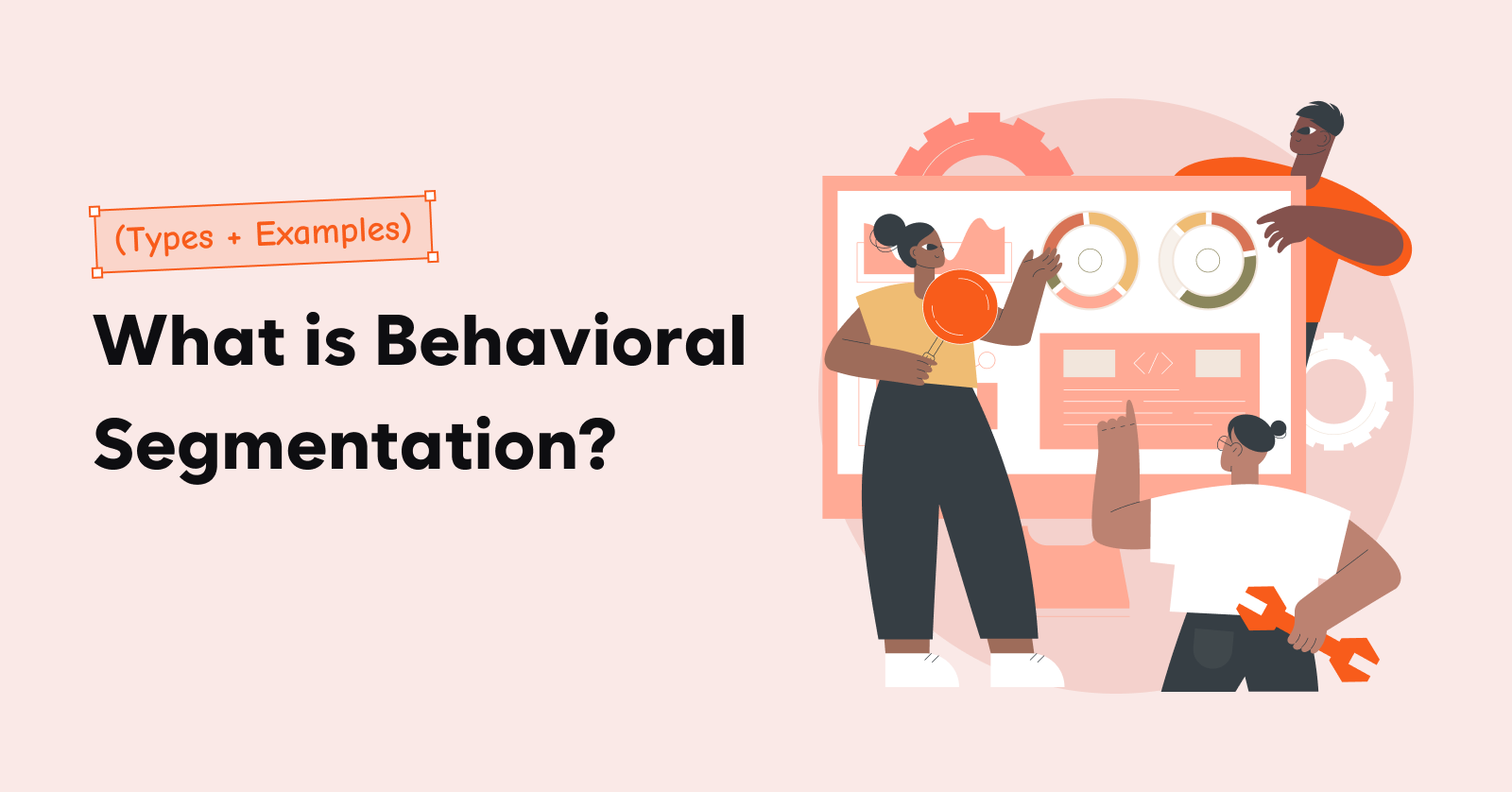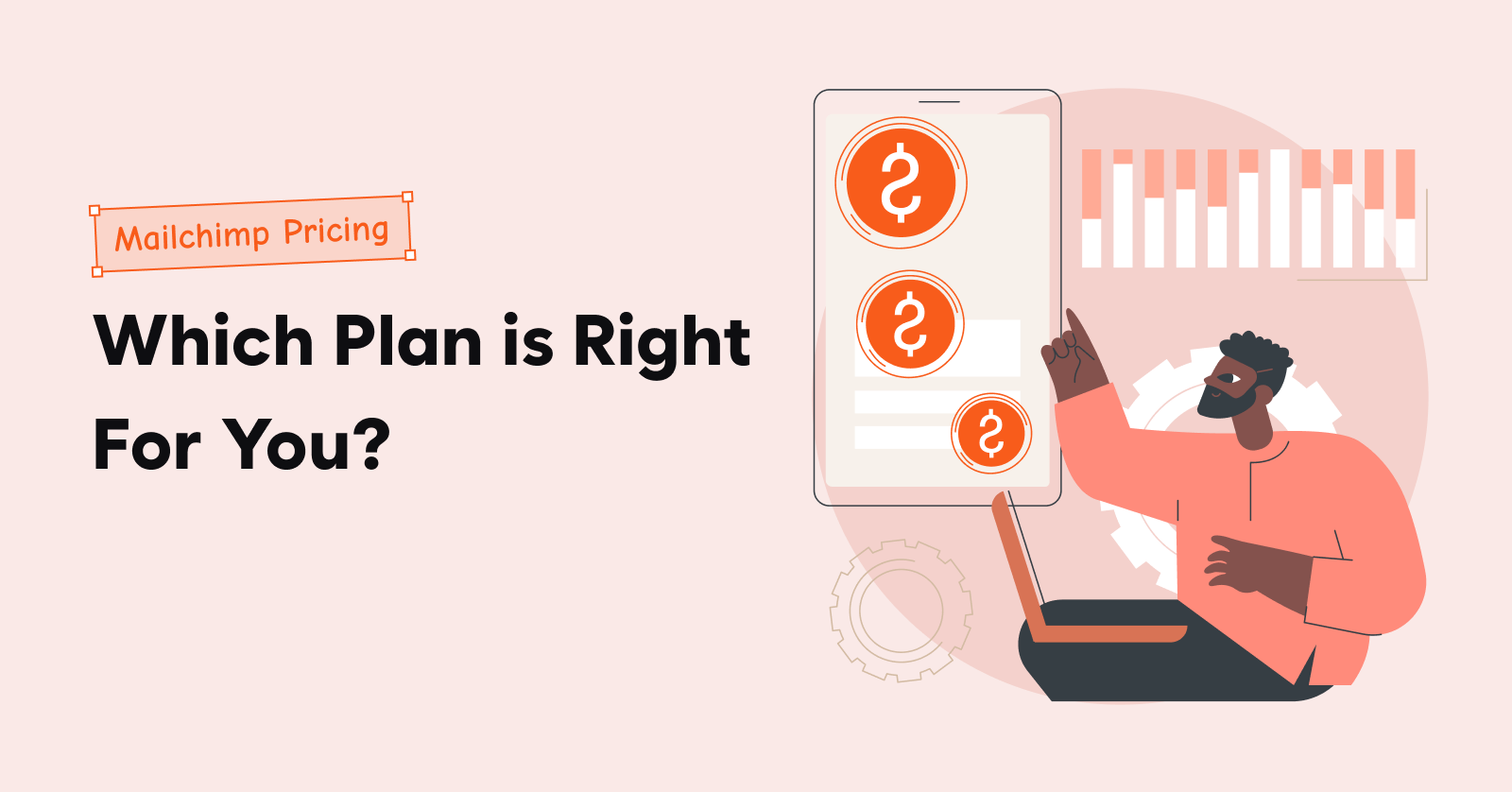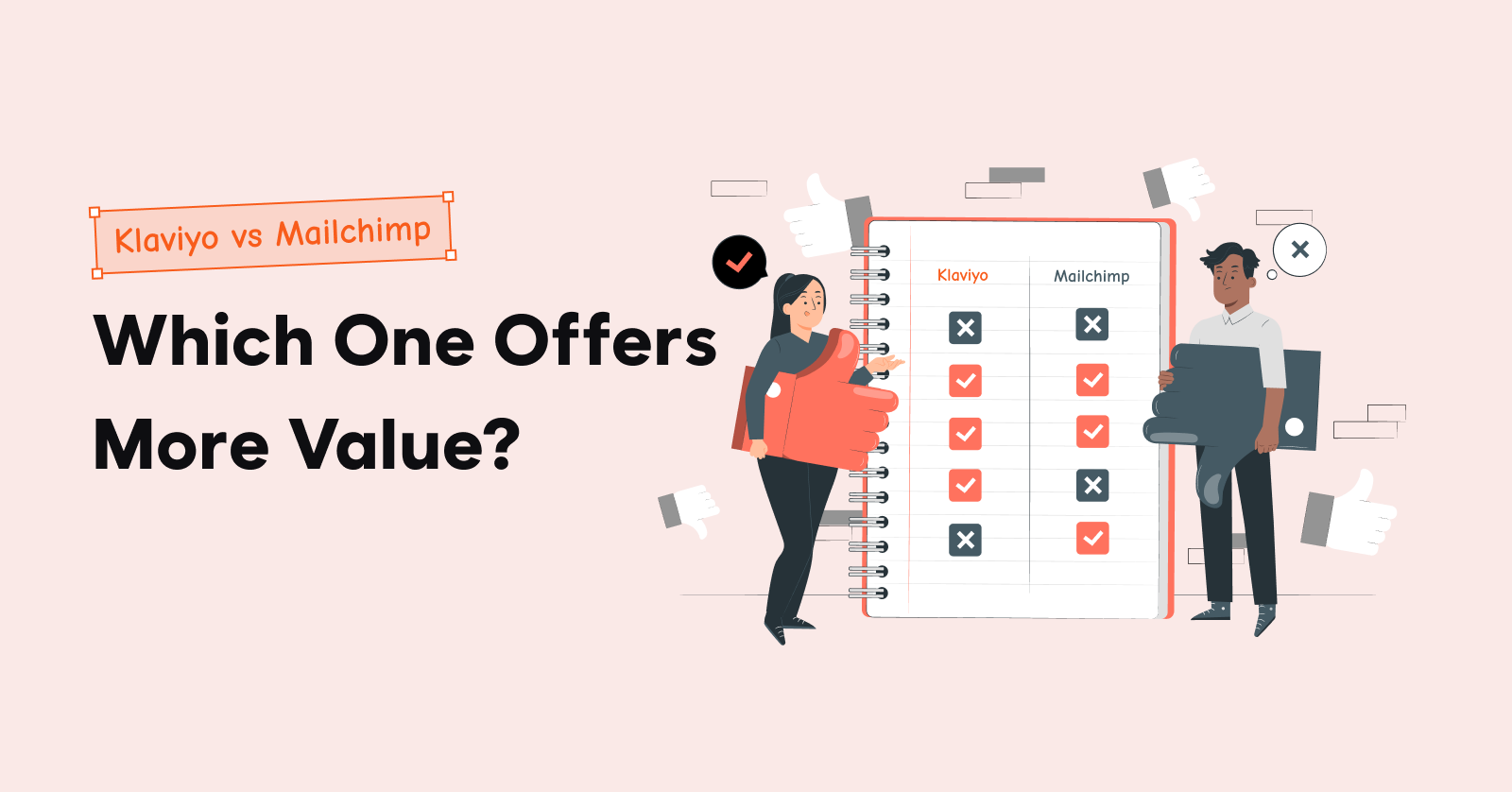If you want the quickest way to increase your website traffic, you must create email newsletters.
You could be asking a question now as to why you need newsletters when you can just send emails. The short answer is emails are transactional, while newsletters are more informative, promotional, and content-focused.
If done right with a newsletter plugin, you will see a surge in your website traffic, improved customer relationships, and brand loyalty, all in a cost-effective solution.
This blog will teach you how to create email newsletters. Read on to learn these easy-to-implement newsletter best practices and get inspired by the examples.
Automate all types of email newsletters within a few clicks with Retainful’s easy-to-setup email automation
What is an email newsletter?
An email newsletter is typically sent to customers interested in your brand or to a subscribed audience. It usually contains curated content, updates, and promotions.
Generally, businesses create email newsletters to communicate, inform, and connect with their audience. They typically contain a mix of relevant content and promotions aimed at providing value and maintaining an ongoing relationship with customers.
Why should you write a newsletter?
We already know that newsletters are periodic, and their regular communication keeps your audience engaged and informed. But what other benefits make creating newsletters so important for your business? Let’s take a look at them.
Connect with customers: Creating newsletters is an effective way to distribute your latest products, promotions, and content. They offer a direct line of communication with customers to build strong relationships with your customer base using valuable content.
Branding: You get to build brand recognition and loyalty by consistently flaunting your brand’s identity, values, and personality. From visuals to tone, each newsletter reinforces the image you want to convey to your audience.
Drive sales: Newsletters have a way of creating awareness and curiosity by showcasing new products or special promotions. You can also include incentives like exclusive offers or discounts to encourage customers to purchase.
Increase website traffic: When you send curated content and teasers, subscribers will visit your website for more information. Also, strategic CTAs guide readers to certain landing pages, which leads to increased overall site traffic.
Increase ROI: Newsletter best practices help you maintain customer engagement, offer targeted promotions, provide valuable insights for making informed decisions, and encourage repeated purchases. Hence, the increase in ROI.
How do you create effective email newsletters?
We have compiled a list of email marketing strategies that could help you create email newsletters more effectively.
It doesn’t matter if you are new to email newsletters or have already been sending them. These strategies will enhance your campaign performance, and here are step-by-step instructions on how to create an email newsletter.
Step 1: Choose the right email newsletter tool
Great email newsletters are created with newsletter automation tools. Apart from eliminating redundancy, these tools help you maintain consistency and schedule delivery.
You can easily segment the subscriber’s list based on location, interests, or purchase history for targeted communication. The dynamic content that these tools offer helps you customize your newsletters based on subscriber preferences. Combine dynamic content and scheduled delivery, and you’ll see a spike in your engagement rate.
Here are another bunch of benefits you can get from using a newsletter automation tool.
- Analytics and Reporting
- A/B testing
- Template Designs
- Regulatory Compliance
- Integration with Other Tools
- Scalability
Create attractive email newsletters with pre-designed templates and schedule them at well-timed intervals using Retainful.
Step 2: Use subscription forms
You can’t expect results from creating the same email newsletters for all of your customers. They have to subscribe to your newsletter, and you can easily do that by placing subscription forms on relevant pages.
Set expectations in your email subscription form about what subscribers will receive, such as exclusive content, promotions, or valuable insights. You can also go a step further and incentivize them to subscribe.
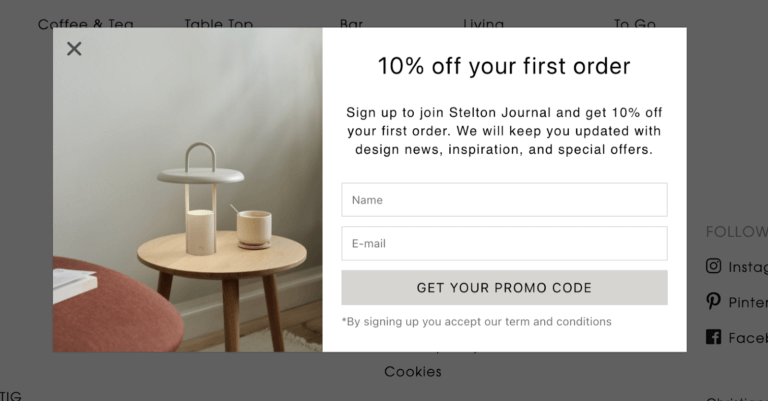
Don’t skip adding links to your privacy policy for transparency. Also, don’t shy away from adding social proof, like mentioning the number of existing subscribers to build trust.
Step 3: Segment list based on shopping behavior
Sending the same newsletter to all your subscribers won’t be helpful to you or them. Only when you send relevant content, product recommendations, and promotions will your engagement and conversion rate increase.
So what should you do to achieve that? Just segment your subscriber list based on specific preferences and unique shopping behaviors. For example, if you segment based on purchase history, you can send personalized product recommendations or exclusive offers related to their past purchases.
Figure out what type of customer data you will use for segmentation. It could be based on demographics (age, gender, education), psychographics (Lifestyle, work, product preferences), and engagement rate (active and inactive subscribers).
Step 4: Prioritize personalization
Have you ever clicked on the unsubscribe button on a relevant and personalized email that feels like it’s giving you individualized attention? Of course not, and your subscribers wouldn’t do that to your personalized newsletters either.
Every successful email newsletter is highly personalized for increased relevance to capture the subscriber’s attention. Also, this helps create a more humanized connection between you and your subscriber despite you using automation software.
Create email newsletters with personalized recommendations and exclusive offers to spark an instant interest, and the chances of customers clicking on your CTA are huge, leading to higher CTR.
A quick note: personalization helps increase customer loyalty with its positive and individualized user experience.
Step 5: Be smart about subject lines
Nobody opens their emails without seeing the subject lines first. When you create email newsletters, aim to write subject lines that intrigue them, spark curiosity, or promise value.
Don’t promise them something in the subject line, and then make the newsletter about something else. This might work for one email newsletter, but eventually, your open rates will drop.
You can also personalize your subject lines based on your subscriber’s interests, preferences, or behaviors. Relevance increases the chances of your email being opened and engaged with. You can also play urgency by offering a limited-time offer or exclusive promotion.
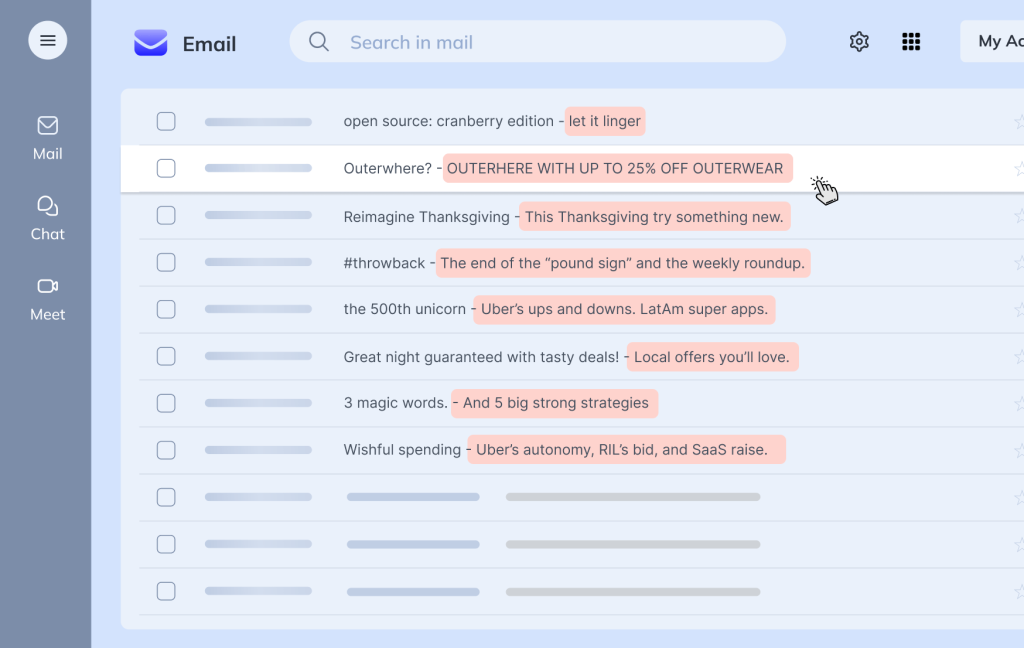
Also, don’t ignore preheaders. They give a glimpse into the email content, so utilizing this space wisely increases the chances of your email being opened.
Step 6: Opt for a minimalistic design
When you stick to newsletter best practices that support minimalistic design, you avoid unnecessary clutter and distractions in your template.
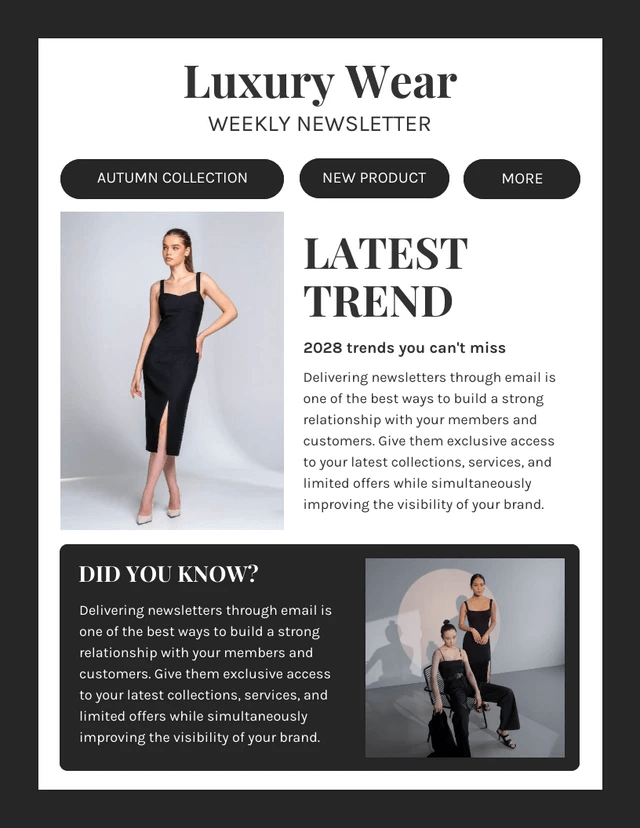
Using excessive visual elements in your newsletter template overwhelms your customers and makes it hard for your subscribers to absorb the key messages. To improve the newsletter’s readability, use clear typography, appropriate spacing, and a balanced layout.
Minimalistic newsletter design also ensures faster loading times, which is crucial to keeping customers engaged. It is especially very helpful for mobile users.
A quick tip: pick a newsletter plugin that offers pre-made templates that are customizable with a drag-and-drop editor. It makes the whole design process so much easier.
Step 7: Offer value
A very crucial newsletter objective is to offer valuable content. It either has to be useful, entertaining, or informative. Aim to create email newsletters with less marketing intention and be more informative. This easily increases the credibility of your newsletters’ credibility, leading to increased open rate and interaction.
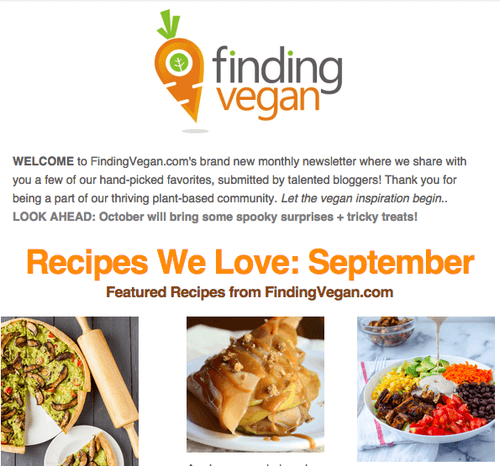
When you keep offering valuable content, you also increase your subscriber retention and loyalty over time. You would also appear as an expert in your niche, which establishes authority and increases the conversion rate.
Step 8: A clear CTA
CTA is supposed to guide the subscriber to take specific actions. When you create email newsletters, make sure to add a CTA directing them to explore your website, take advantage of promotions, or engage with your brand.
When you design your email newsletter template, make sure that your design and content are cohesive to put the CTA in the spotlight.
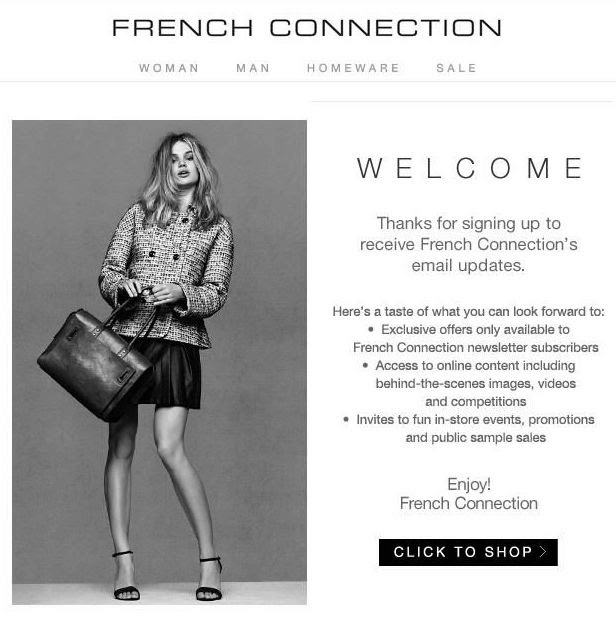
Take a look at the above example. The whole newsletter just flows naturally to the CTA at the bottom of the template.
Take notes: the simple, clutter-free, very distraction-free template with an image on one side and the newsletter copy that conveys just what is needed to set expectations and a bold CTA at the end.
Email newsletter best practices
Creating email newsletters is not rocket science, but it isn’t going to be a cakewalk either. Yes, your newsletter subscribers have signed up to read your newsletters, but you can’t create an effective email newsletter without sticking to a few important newsletter best practices.
Include alt text for images
Some email clients may not automatically display images. You don’t want your email newsletters to look unpleasant with weird blank spaces for images, do you? This is why you should follow the newsletter best practice of adding alt text to give your readers a meaningful experience.
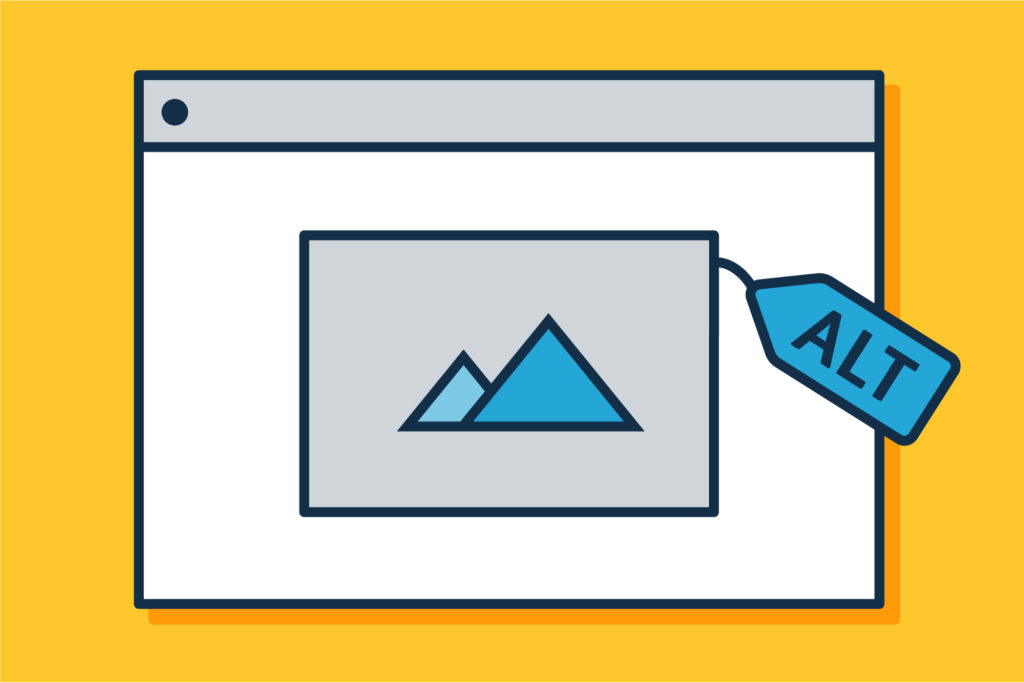
Alt text not only ensures you align with email newsletter best practices, but it also makes your brand look very considerate. This is because it makes your newsletters more accessible to individuals with visual impairments who may use screen readers.
When you create email newsletters with alt text for images, it makes your newsletter rank better in search engines because search engines use alt text to understand the content of images.
Keep the copy concise
It is a good idea to consider the attention span of your audience when you are about to write a tome of an email newsletter content. You have to create newsletters with the inverted pyramid strategy to give them the most within a shorter span of time.
It is an email newsletter best practice and one of the best content strategies that emphasizes the most important information at the beginning. This ensures that readers get the core message even if they read only the first few lines of the content.
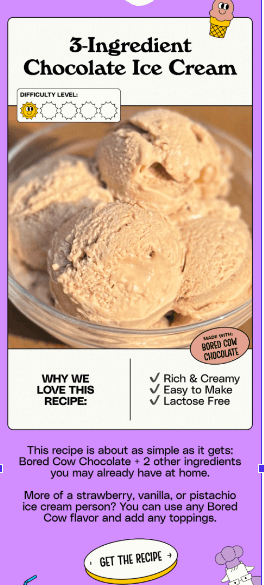
Another newsletter best practice is to write shorter sentences and paragraphs to enhance readability for mobile users who have very limited screen real estate. Also, concise copy shows that you value your subscribers’ time, which earns your brand a badge of professionalism.
Optimize for mobile
If your subscribers are not having a great user experience with your newsletters, they are probably not going to open your following newsletters. That’s exactly why you need to create email newsletters that are mobile-optimized.
These mobile-optimized newsletters have faster loading times, legible fonts, appropriately sized images, tappable CTAs, reduced horizontal scrolling, and touch-friendly elements. Following newsletter best practices, including all of these elements, reduces bounce rates and ultimately increases engagement rates.
Take advantage of multimedia elements
Eye-catching multimedia elements are more likely to be noticed and remembered, and that’s how you create a winning newsletter. Multimedia allows you to tell a more compelling story in line with the newsletter best practices.
Videos, in particular, enable you to convey emotions, showcase products in action, or share behind-the-scenes glimpses, creating a deeper connection with your audience.
Whereas high-quality and professionally captured images provide a visual representation that can influence purchasing decisions.
If you think images and videos are old school and want to add some humor and personality to your newsletters, you should try GIFs. They are playful and lighthearted, and they draw the eye easily. Hence, they can be placed strategically to emphasize key messages or calls to action.
Concentrate on timing
One of the most important newsletter best practices that your open rate vastly depends upon is your timing. The day of the week also influences engagement.
Business-related content might perform better during weekdays, while leisure or lifestyle content may be more effective during weekends.
Don’t forget to optimize your newsletter timing to match the mobile users. Consider peak times for mobile usage, such as during commuting hours or in the evening, to maximize engagement rate.
For more clarity, make use of the data and analytics in your newsletter automation tool to understand when your subscribers are most active and responsive.
Include an unsubscribe option
There’s no skipping this step because it would be illegal. Other than that, the unsubscribe button is one of the newsletter best practices because it clearly shows you respect user’s preferences and promotes transparency.

Let’s say you ignore the warning and send your newsletters without the unsubscribe button. You can expect two of these things to happen.
- If recipients find it challenging to unsubscribe from your emails, they may mark your messages as spam. This can harm your sender’s reputation and impact deliverability rates.
- Failure to comply with this regulation will result in penalties.
Analyse email metrics
Analyzing email metrics is a fundamental aspect of creating newsletters. Open rates, click-through rates, and conversion rates give you insights into the effectiveness of your campaigns.
Metrics reveal the engagement level of your subscribers. High bounce rates, low open rates, or inactive subscribers may indicate the need to clean up your email list. Maintaining a healthy list ensures better deliverability and engagement.
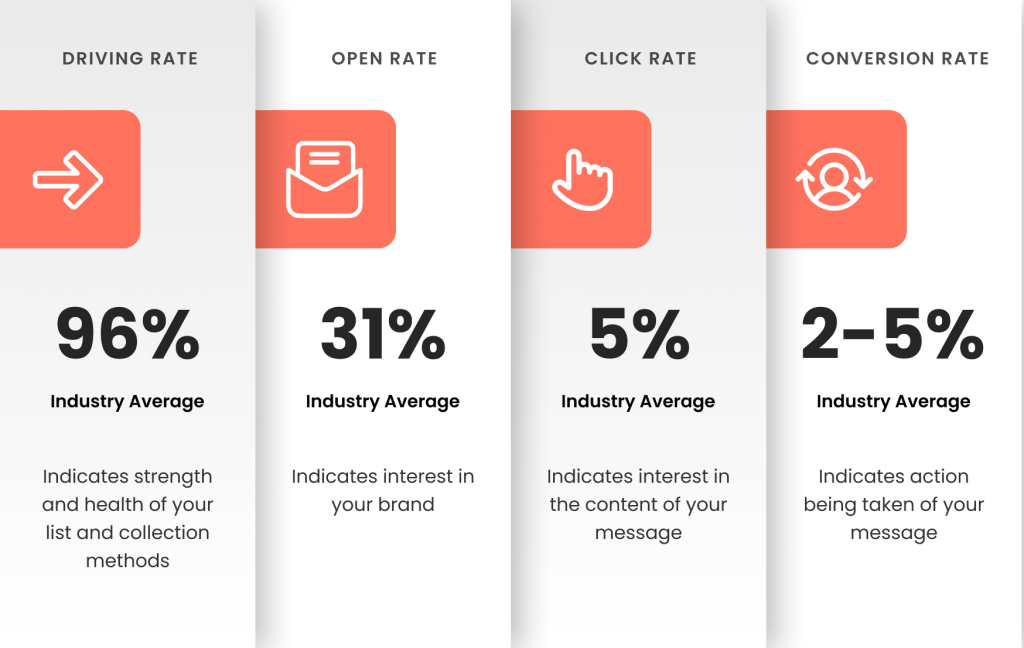
For newsletters with specific conversion goals, such as making a purchase or filling out a form, analyzing conversion rates provides insights into the effectiveness of your call-to-action (CTA).
When you analyze metrics, you can calculate the ROI for your campaigns. This lets you make informed budgetary decisions for future email campaigns. You can also evaluate the lifetime value of a customer acquired through email marketing campaigns with ROI analysis.
Add social media handles
Why narrow down the growth of your customer base to one channel? Add social media handles when you create email newsletters to increase the visibility of your content beyond email subscribers.
Social media comes with the added advantage of easy sharing, which allows your subscribers to spread your content across their followers.
When you have an active and engaged social media presence, it reflects a modern and interconnected approach to communication. Also, it adds credibility to your brand, hence the increased engagement rate.
Send personalized email newsletters with various segmentation criteria in Retainful for better customer engagement.
Start creating email newsletters with Retainful
Now that you know newsletter best practices and how to create email newsletters, it must be clear that you cannot do it without a newsletter automation tool. Allow me to introduce you to Retainful, one of the best tools for newsletter automation.
You can use the subscription form or popups to collect email addresses. The pre-made templates and drag-and-drop editor will make your design process a breeze. Also, the segmentation will help you create more targeted newsletter campaigns.
The automation will only take a few clicks to set up, and the analytics will give you a deeper insight into how your campaigns are performing.
To learn more about newsletter campaign automation, read our blog
Frequently Asked Questions
To plan an email newsletter, outline your content, set a schedule, and focus on audience engagement for a strategic and impactful campaign.
When writing a newsletter email, craft compelling content, use a conversational tone, and include a clear call-to-action to drive reader engagement.
The best program to create newsletters is Retainful. It has everything from subscription forms to pre-made templates and easy automation and scheduling.
Opt for a clean and mobile-responsive format for an email newsletter, incorporating visuals and concise text to enhance readability and engagement.
You can run a successful email newsletter using Retainful by consistently delivering valuable content, segmenting your audience, analyzing metrics, and optimizing based on subscriber feedback.
Email newsletters can be highly effective when crafted strategically, offering valuable content, personalization, and consistent communication to build and maintain audience engagement.
